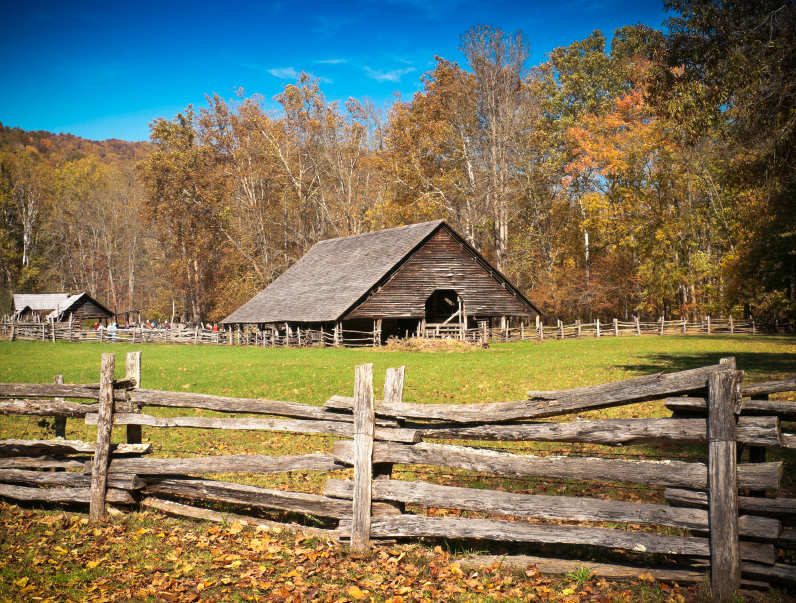The best gear for building a survival shelter
01/26/2019 / By Mary Miller

If ever you find yourself lost in the wilderness, your top priority should be finding shelter. A shelter can protect you from the elements and exposure to extreme heat or cold. It also keeps you safe from pesky bugs and curious animals. While being able to build a temporary shelter with your bare hands is certainly an impressive and useful skill when SHTF, you will probably have an easier time when equipped with the right tools. Here are some of the best survival gear you will want to stock up on to build your own emergency shelter. (h/t to PreppersWill.com.)
Folding saw
You may need to cut a few branches from some trees to build a basic lean-to shelter. A saw is the right tool for the job, but you probably won’t want to lug around a bulky hand saw while camping out in the woods. A folding saw can get the job done just as well, and you can easily fold it back up and store it in your bug out bag when you’re done. (Related: How to make a formidable temporary shelter when SHTF.)
Folding shovel
Working folding shovels are incredibly versatile tools that have been available since WWI. If you ever need to dig a dugout shelter or a snow cave, a lightweight but durable folding shovel will be your greatest asset. You can even use it to dig other emergency shelter features, such as a fire pit or a sanitary latrine. If you plan on using your folding shovel for a long time, make sure to get a good-quality shovel that can withstand intense digging, since building a dugout shelter will require a lot of work.
Cordage
Most emergency shelters will require some length of rope or cordage to tie things together. One of the easiest shelters to build is a tarp shelter. As long as you have some tarp and enough cordage, you can easily run the length of cordage between a pair of trees and drape a tarp or plastic sheet over it. If you have spare time, you can weave your own natural cordage out of tall grasses or sturdy plants. Alternatively, you can choose to buy your own nylon string, rope, fishing line, or paracord. A 550 paracord should be strong enough to support the weight of most temporary shelters.
Sponsored solution from the Health Ranger Store: Lab-verified Nascent Iodine solution is a dietary supplement that provides your body with supplemental iodine to help protect your thyroid during radiation exposure. Nuclear accidents such as Fukushima (or nuclear war) can expose your body to radioactive iodine-131, a dangerous radioisotope. Pre-loading your system with stable iodine occupies the iodine receptor sites on your organs, causing your body to naturally expel radioactive iodine you may have been exposed to through air, food, water or milk products. This defensive strategy is recommended by nearly all health authorities, worldwide, including the Nuclear Regulatory Commission. Discover more at this link.
Stakes
Every tent comes with a set of stakes to keep the tent from falling over or being blow away. Even if you don’t pack the tent with you, you can still use the stakes to hold down a temporary tarp shelter. You can even make your own stakes with some sticks and a sharp tool.
Tarps or military ponchos
You can’t make a tarp shelter without a tarp or some similar protective material. A tarp shelter is one of the simplest shelters you can build when SHTF. Even if you don’t have the other items on this list, as long as you have some cordage and a tarp, you will have at least some level of protection against the elements. Try to own your own military poncho or a specialized survival tarp as these often come with reinforced grommets that you can secure or tie down with small stakes. When all else fails, you can simply wrap the tarp or poncho around yourself for a makeshift wearable shelter.
Tomahawk or hatchet with hammer poll
A folding saw might be useful for small branches, but you won’t get much use for it when it comes to felling trees. You’ll be able to chop a lot more wood with a tomahawk or a hachet. You can use either one to easily cut down stakes or poles to build your shelter. If your tool comes with a hammer poll, you can even use it to drive the stakes into the ground.
Learn more survival tips for building your own emergency shelter by going to Survival.news.
Sources include:
Tagged Under: bug out, cordage, DIY, emergencies, emergency preparedness, emergency shelter, folding saw, folding shovel, hatchets, military ponchos, off grid, Off Grid living, outdoors, preparedness, preparedness and survival, prepper, prepping, self sufficiency, shelter, SHTF, stakes, survival, survival gear, survival shelter, survival tools, survivalist, tarps, temporary shelter, tomahawks, wilderness




















